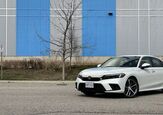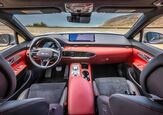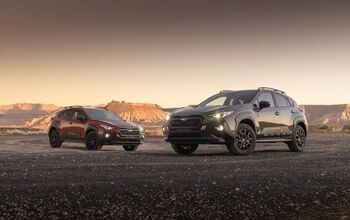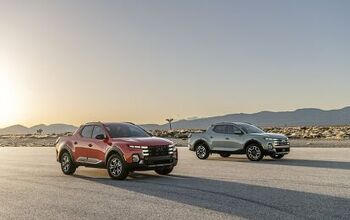What It's Like to Drive an Electric Volkswagen Microbus With a Manual Transmission

It takes a special kind of person to sit in the back of a Rolls-Royce and think: “I can do better than this.”
But that’s exactly what Pete Casciato thought to himself on his way to a childhood friend’s wedding. A born entrepreneur, Casciato threw himself headlong into a major project involving an engine swap and an electrical engineer that started in 2010 and continues to this day (as any good project does).
Casciato was interested in starting his own limousine business, but he also had an interested in cool cars (i.e. classic Volkswagen s), and a passing interest in electric vehicles. Realizing that the task required a lot of space and a lot of city driving, he decided that there was a way to marry all of those interests. So he bought a 1973 bay window microbus from Washington state, the motor from a forklift, and a whole bunch of Chinese aviation batteries and set about making his very own electric VW.
Do you remember when Jeremy Clarkson used to start a segment in Top Gear by asking, “How hard can it be?” and we all laughed because we knew that the answer would be “very?” Well, Casciato probably didn’t laugh at those bits. Having worked as an auto mechanic for much of his life, he wasn’t exactly a neophyte, but he certainly wasn’t an electrical engineer. Apart from a little online research, he was basically going into this project blind. “I somewhat foolishly threw myself into the deep end,” he admits now, but at the time he said to himself, “Just build it.”
The project ended up taking him until 2011 to get on the road, but through a combination of help from the homebrew EV community (like the electric car, electric conversions have been around for a lot longer than you’d think) and the help of an electrical engineer he met closer to home, he did it.
So what is it like to drive? Well, disappointingly normal is the answer. By which, of course, I don’t mean that the car is disappointing, it just kind of reminded me of the first time I rode a motorcycle. I’d really gotten myself psyched up for difficulty and danger, but having used a clutch before and ridden a bicycle, there was a vague sense of anticlimax when I got going without much difficulty (I’m no Evel Knievel, though, I dropped the bike as soon as I tried to stop). Similarly, the VW moves like any other. It’s peppy, but not ludicrously so. It’s quiet, but it’s still an old car, so there’s a lot of ambient noise going on, and DC motors are pretty loud, so it’s not exactly silent. And its brakes and steering and signals are all VW, so there’s nothing too weird there.
SEE ALSO: VW Confirms That the I.D. Buzz is Headed to Production
Power comes from a DC electric motor that originally powered a forklift and it sits out in the back where it belongs. Oddly enough, the motor is so “where it belongs” that it’s actually still paired to VW’s four-speed manual transmission. That means that this electric car not only has gears, but a clutch, too. That’s because DC motors have a torque curve and feel a little bit like an internal combustion engine. So gears have to be used for the same reason as a gas-powered engine.
The only weird thing about driving this VW is the clutch. Because this is an electric motor, it won’t stall. So when you stop, you don’t need a foot on the clutch, nor do you need it to get going off the line, something I found impossible to remember when merging with traffic. Changing gears is also a little weird because the clutch is either on or off. Going from one gear to the next happens remarkably smoothly, but I found myself waiting for an engagement point that never came, which meant that I was driving it choppily.
Still, despite the weirdness, the torque curve was actually nice. I’ve said before that the VW e-Golf’s lack of a torque curve is one of its major selling points and I stand by it. It just pulls and pulls and pulls, but I have to admit that I still like finding and searching for torque. It’s a skill that keeps me engaged while I’m driving and it lends this bay window a lot of mechanical charm. It still has gobs of torque, though, so realistically, second gear is all you need for city driving.
The Chinese batteries also give it all the range you need for city driving. Casciato says he long ago conquered his range anxiety. “How far do you want to go?” he asks. “It’ll do it.” It’s torquey, it’s quick, there’s no smell of gas (an especially important point for his bridely clients), and it’ll drive all the live long day.
It’s reliable, too. Or at least it was until about 3,000 miles into driving it. Everything was rosy until his controller failed on one of Toronto’s busiest and most fashionable streets, Queen Street. Perils of a homemade car. Casciato was unfazed, though. He says that while he was waiting for help, he took advantage of the foot traffic to hand out some flyers for his chauffeuring business. His wife calls him a shameless self-promoter. Since then, he’s put in an upgraded motor that’ll get him going even faster and he’s undaunted by highway driving, though he admits that the shape of the bus pretty much makes 75 mph its top speed.
SEE ALSO: Forget Supercars, One Celebrity has a Volkswagen Bus Collection
The bus’s normalness is its biggest appeal to Casciato. “I would’ve given up on it a long time ago if it didn’t work,” he says. And while he thinks it’s nice to spend a little less money on commuting, he isn’t what you’d call an environmentalist. It’s all about performance. “When I put the batteries down, I was blown away by how good it was,” he says. “That’s the biggest advantage to me.”
As with any project, though, it may never really finish. Although he’ll happily extol the current setup’s virtues, he’s still decided that the DC motor needs to come out. One of the biggest reasons for the change, coincidentally enough, is the need for air conditioning. Currently, the car’s only form of climate control is the windows and that doesn’t always suit people on their way to a wedding.
Secondly, Casciato wants his creation to be a little easier to fix. This old style of electric car requires a lot of homebrew computer programming and the particular program that runs this bus was written by a couple of guys from Florida. The upshot is that it was free, the downside, though, is that everything behind the scenes is a bit of a mystery. If something were to go wrong, the car might brick like a bad iPhone. Casciato wants something that’s simpler to fix, something easy enough for any garage to handle. So it’s time for a motor swap.
That motor now comes from a Nissan Leaf and is in his workshop. It needs a little work before it can go into the car, but when that happens, he’ll have a faster charging, air conditioned bus that can be fixed by a Nissan mechanic — Casciato wanted an e-Golf unit, but one sadly wasn’t available to him at the time. “So now,” says Casciato, “if I’m struck by lightning, the car can still be used.”
That’s still a ways off, though. Casciato bought the Leaf in August and he’s already stripped it of all the parts he needs, but there are no instruction manuals for Nissan Leaf to Volkswagen Microbus motor swaps, so a lot of trial and error is going to be needed. With everything in pieces, there’s also a lot wiring all over the place. Like, a frightening amount of wiring. But Casciato knows that he can simplify for the loom for his purposes. Ultimately, he hopes to work on this project whenever he can over the course of this winter and to have it on the road next summer.
It’s easy to feel like the electric onslaught is an existential threat to cars and the enthusiast lifestyle, but people like Casciato prove that it’s just swapping one technology for another. Speaking next to a Ferrari 308 that his shop is working on, he gushes about good old-fashioned engineering, but now he can talk about motors, too. “I wasn’t an electrical genius going into this,” he admits. “But through doing this, I’ve gotten better.” And by jumping in with both feet, he’s managed to build something that’s engaging, personal, and has personality coming out the wazoo.
A version of this story originally appeared on VW Vortex
Discuss this story on our Volkswagen Forum

Sebastien is a roving reporter who covers Euros, domestics, and all things enthusiast. He has been writing about the automotive industry for four years and obsessed with it his whole life. He studied English at the Wilfrid Laurier University. Sebastien also edits for AutoGuide's sister sites VW Vortex, Fourtitude, Swedespeed, GM Inside News, All Ford Mustangs, and more.
More by Sebastien Bell





































Comments
Join the conversation
Kudos to Pete Casciato. There's a reason why companies like Rebirth Auto and EV West charge $100K for their creations; electric car conversions are complex and labor-intensive. If you're willing to spend the money, there are a bunch of products that can really help with the conversion. Zilla controllers, for example,or NetGain motors paired with their brand of controller. It's a bit dry to read, but Charged magazine has a ton of useful info on the necessary doohickeys to complete a conversion.